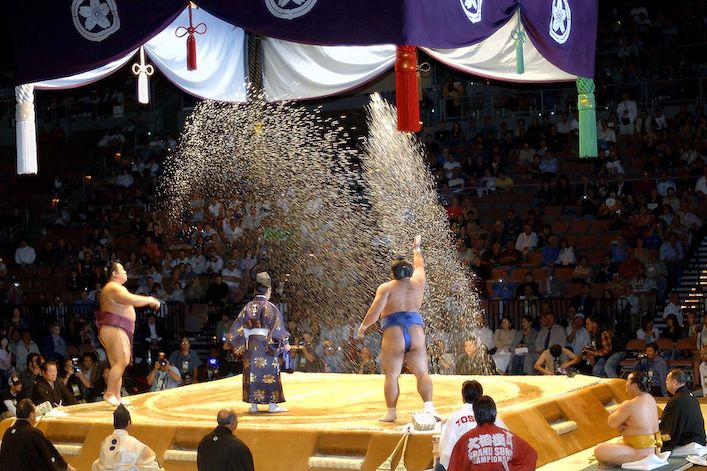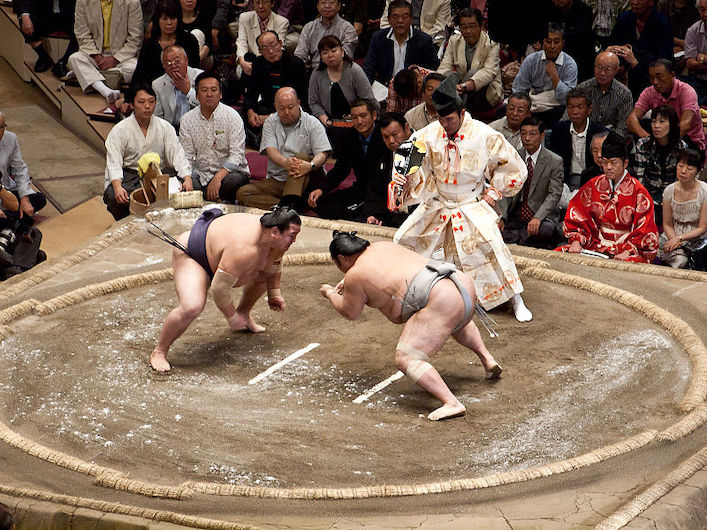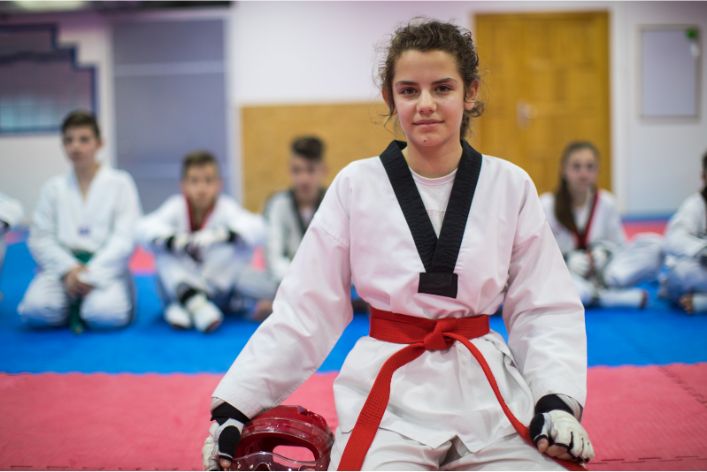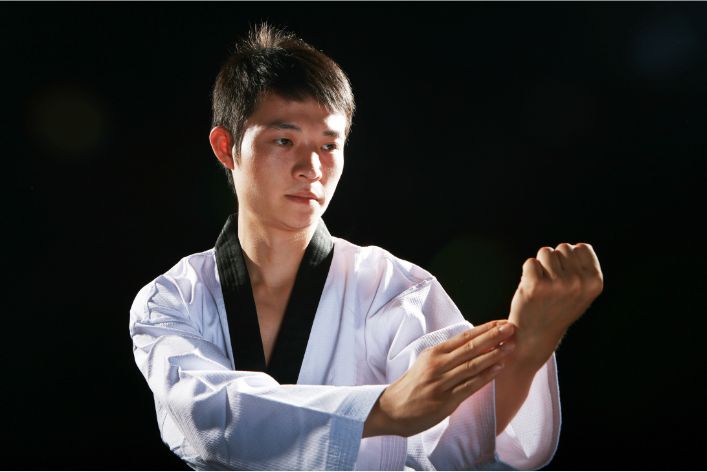Last Updated on May 26, 2023
Despite the simplicity of Sumo wrestling, it is steeped in rituals and traditions that are as important as the actual wrestling itself. Sumo wrestling is a traditional Japanese sport that dates back over 1,500 years and is still revered today. The sport involves two wrestlers, or rikishi, attempting to force one another out of a circular ring or to the ground.

Rituals and traditions have always been an integral part of sports, imbuing games with meaning beyond their basic rules and objectives. In sumo wrestling, this takes on an especially important role, where the rituals and traditions are considered more important than individual achievement. From how a wrestler enters the ring to what he wears during the tournament, every aspect of sumo wrestling is carefully choreographed to reinforce the sport’s reverence for tradition.
The significance of sumo wrestling rituals and traditions lies in their ability to connect the sport to Japan’s rich cultural history. By adhering to these rituals, sumo wrestlers show respect not just to their opponents but also to their predecessors in the sport. The rituals also create a sense of community among wrestlers and fans alike, making it more than just a game.
Sumo wrestling is not just a sport but a cultural institution that reflects Japan’s values and traditions. The rituals and traditions are as important as the actual competition itself, and they serve to connect the sport to its rich cultural history. Sumo wrestling is a shining example of how a sport can be elevated from a mere game to something much greater, through the power of tradition and ritual.
Read: How Do Sumo Wrestlers Maintain Their Weight?
History of Sumo Wrestling Rituals and Traditions
Sumo wrestling is a sport that is steeped in tradition and ritual. These practices are just as important as the actual match itself. In fact, the rituals and traditions of sumo wrestling are considered to be an integral part of Japanese culture.
Origins of Sumo Wrestling:
- Sumo wrestling has its roots in Japan’s ancient past
- The sport was originally performed as a religious ritual
- Sumo wrestling gradually evolved into a more competitive sport
Development of Sumo Rituals and Traditions:
- Sumo wrestlers wear a traditional outfit known as a mawashi
- Before each match, wrestlers perform a series of rituals to purify the ring
- One of the most iconic sumo rituals is the shiko, where wrestlers stomp their feet
Significance of these Practices in Japanese Culture:
- Sumo wrestling is considered to be a symbol of Japanese identity and culture
- The rituals and traditions of sumo wrestling reflect the country’s emphasis on discipline and respect
- Sumo wrestling is also closely linked to Shintoism, Japan’s indigenous religion
The history of sumo wrestling dates back thousands of years. Its origins can be traced to Japan’s ancient past, where the sport was performed as a religious ritual. Over time, sumo wrestling evolved into a more competitive sport, with matches being held at shrines and other religious sites.
One of the defining features of sumo wrestling is the traditional outfit that wrestlers wear. This outfit is known as a mawashi, and it consists of a loincloth-style garment that is wrapped around the wrestler’s waist and thighs. The mawashi is designed to be both practical and symbolic, representing the wrestler’s strength and power.
Before each match, wrestlers perform a series of rituals to purify the ring. These rituals are designed to ward off evil spirits and ensure a fair and just match. One of the most important rituals is the purification of the ring itself. Wrestlers take turns throwing salt into the ring to purify it and ward off evil spirits.
Read: The Diet & Lifestyle of a Sumo Wrestler: A Guide
Embodying Culture and Tradition: The Rituals and Significance of Sumo Wrestling in Japan
Another important ritual in sumo wrestling is the shiko. This is where wrestlers stomp their feet in a specific pattern, in order to intimidate their opponent and show off their strength. The shiko is considered to be both a physical and a spiritual exercise, and it is believed to help wrestlers focus their energy and achieve a state of harmony and balance.
The rituals and traditions of sumo wrestling are considered to be an integral part of Japanese culture. They reflect the country’s emphasis on discipline, respect, and hard work. Sumo wrestling is also closely linked to Shintoism, Japan’s indigenous religion. Many of the rituals and practices associated with sumo wrestling are derived from Shinto beliefs and traditions.
The significance of sumo wrestling rituals and traditions cannot be overstated. They are an essential part of the sport and a reflection of Japan’s unique cultural identity. From the wrestlers’ traditional outfit to the purification rituals performed before each match, these practices are deeply rooted in tradition and history. Sumo wrestling is not just a sport, it is a symbol of Japan’s past, present, and future.
Read: Understanding Sumo Wrestling Ranking System
Current Sumo Wrestling Rituals and Traditions
Sumo wrestling is a Japanese traditional sport that dates back to ancient times. The sport is not only about brute strength but also about the rituals and traditions that accompany it. These rituals and traditions reflect the rich Japanese culture and add depth to the sport. In this blog chapter, we will explore the current Sumo Wrestling Rituals and Traditions and their significance.
Shikiri Ceremony
The Shikiri Ceremony is held before each bout and is a ritual that involves the wrestlers staring at each other intensely to psyche themselves up for the match. The wrestlers then lift their legs, stomp them on the ground, and raise their fists as they walk back to their corner. This tradition prepares the Japanese wrestlers mentally and spiritually for the bout.
Salt Tossing
The Salt Tossing tradition is also known as Shioiri or Shubansen. Before the start of each match, the wrestlers scoop salt with their right hand and toss it into the ring to purify it and ward off evil spirits. Salt is also believed to help with hand grips, reduce sweat on the hands, and prevent slipping.
Mawashi Tying
The Mawashi is the belt that the wrestlers tie around their waist. Before putting it on, they have to go through another ritual of tying the Mawashi. The tying of the Mawashi is significant as it represents the wrestler’s spiritual and physical readiness for the match.
Ring-entering Ceremony
The ring-entering ceremony, also known as Dohyo-iri, is one of the most significant rituals of Sumo wrestling. During this ceremony, the wrestlers parade around the ring wearing ceremonial aprons and headdresses. This ceremony has a specific order that signifies hierarchy. The highest-ranking wrestler enters the ring last and throws salt to purify the area. The ceremony showcases the discipline, hierarchy, and elegance of Sumo.
Match-starting Procedure
Before the start of a match, the wrestlers place their fists on the ground, ready to begin the bout. The referee shouts “hakkeyoi” to start the match. This shout increases the adrenaline of the wrestlers and intensifies the atmosphere.
Stadium Guidelines
The stadium guidelines aim to maintain the respect and honor of Sumo. Spectators have to behave appropriately during the matches. They must not throw any items into the ring, lean on the railings, or leave their seats during a match. These guidelines demonstrate the importance of discipline in Sumo.
Sumo wrestling rituals and traditions are significant elements of the sport. These practices enhance the sport by showcasing the discipline, hierarchy, and elegance of Sumo. The rituals and traditions also allow the wrestlers to prepare themselves mentally and spiritually for the match. The sport remains a vital part of Japanese culture that continues to captivate fans worldwide.
Read: How to Train Like a Sumo Wrestler: Tips & Techniques

Impact of Sumo Wrestling Rituals and Traditions
Sumo wrestling has been an integral part of Japanese culture for centuries, and its significance is reflected in the rich and elaborate rituals and traditions associated with the sport. From the grand yokozuna dohyo-iri (ring entering ceremony) to the salt-throwing shikiri (pre-match ceremony), Sumo wrestling is steeped in centuries-old customs that make it a unique and fascinating sport to watch.
Sumo Wrestling: Cultural Significance and National Identity in Japan
One of the most essential aspects of Sumo wrestling for the Japanese people is its cultural significance. Sumo wrestling reflects many aspects of Japanese culture, such as discipline, respect, and the importance of physical strength. The wrestlers are seen as fierce warriors who embody the traditional samurai spirit, and Sumo bouts are regarded not only as athletic events but as spiritual experiences.
Another crucial role that Sumo wrestling plays in Japanese society is as a symbol of national identity. Sumo has been an integral part of Japanese culture for centuries and has become a symbol of national pride for the Japanese people. As the only professional sport unique to Japan, Sumo is considered a critical part of the country’s cultural heritage, and its popularity extends well beyond the realm of sports.
The rituals and traditions associated with Sumo wrestling make it a unique sport compared to others. The wrestlers themselves are the embodiment of tradition, from their haircuts to their ceremonial aprons and loincloths. Greco-Roman wrestling, freestyle wrestling, and other Western wrestling styles focus primarily on physical strength and technique, while Sumo wrestling places a heavy emphasis on ritual and tradition.
Sumo Wrestling Rituals: A Testament to Cultural Heritage and Identity
One of the most striking Sumo wrestling rituals is the dohyo-iri, a grand ring-entering ceremony performed before each match. The ceremony involves the wrestlers walking around the ring and performing intricate motions, all while wearing traditional garb. The dohyo-iri is a visual feast for the eyes, with each wrestler’s unique style on proud display.
The shikiri, a pre-match salt-throwing ritual, is a key component of Sumo wrestling. Before each bout, wrestlers face off and one throws salt into the ring for purification and mental preparation. These traditions and rituals are the heart of Sumo, embodying cultural identity and national pride for Japan. The sport’s beauty extends beyond physicality, reflecting Japan’s unique cultural heritage. Watching a Sumo match becomes a celebration of Japan’s past and present, intertwined with its traditions.
Read: The History of Sumo Wrestling: A Deep Dive
Conclusion
Delving into Sumo wrestling’s rituals and traditions, we find their profound significance in the sport and Japanese culture. Rituals before and during matches foster discipline, respect, and unity among wrestlers and spectators. They also ensure the sport’s integrity with strict rule adherence and fairness emphasis.
Traditions like the purification ceremony and grand titles enhance Sumo wrestling’s mystique and appeal. As outsiders, appreciating and respecting these practices is vital for our understanding of this ancient sport and its cultural context.
Preserving these traditions for future generations maintains the continuity of Sumo wrestling. Thus, these practices remain celebrated, keeping the Sumo spirit alive. We invite all readers to reflect on Sumo’s significance, appreciate its lessons, and consider its impact.
By understanding and respecting these traditions, we can contribute to a harmonious future. Indeed, Sumo wrestling is more than a sport; it’s a vibrant manifestation of Japanese culture, offering insights into its past, present, and future.
Read: What are the Basic Rules of Sumo Wrestling?
Before You Go…
Hey, thank you for reading this blog to the end. I hope it was helpful. Let me tell you a little bit about Nicholas Idoko Technologies. We help businesses and companies build an online presence by developing web, mobile, desktop, and blockchain applications.
We also help aspiring software developers and programmers learn the skills they need to have a successful career. Take your first step to becoming a programming boss by joining our Learn To Code academy today!
Be sure to contact us if you need more information or have any questions! We are readily available.











